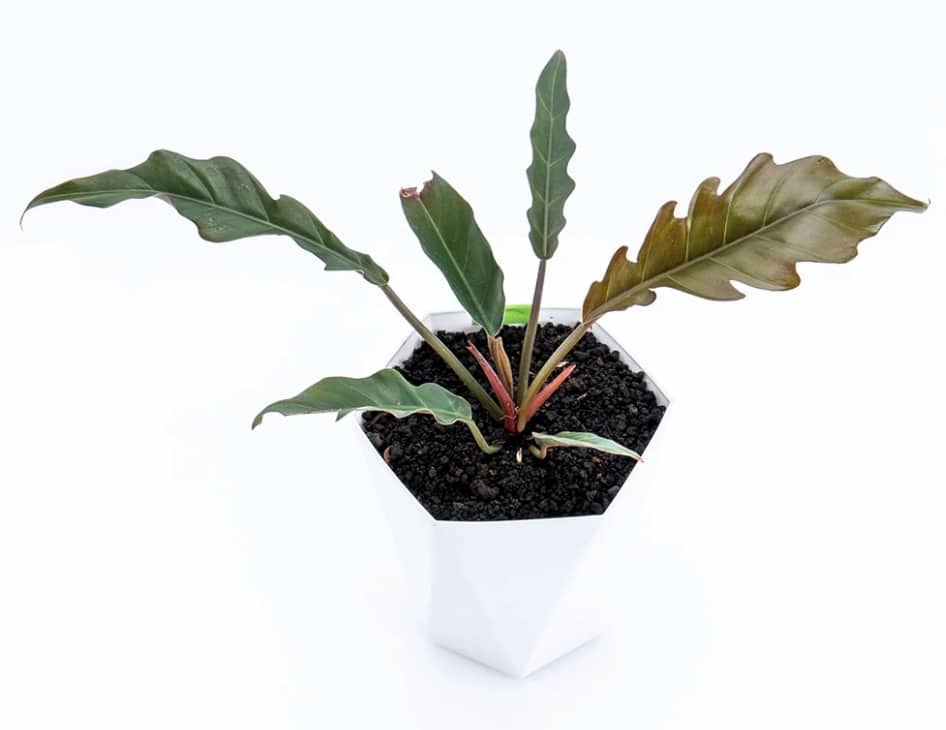The Philodendron Crocodile is a unique tropical plant that’s a hybrid of other Philodendrons native to South America. Philodendrons grow in the rainforests of Brazil and tropical and subtropical regions of Latin America. These plants have large leaves with lobes. The foliage is elongated or deeply cut, and the Philodendrons Crocodile plant will add a tropical look to your home or office.
The Philodendron Crocodile has bright glossy leaves, which are an attractive light to dark green color. Although rare, these plants are relatively easy to care for, which makes them perfect for beginners and more experienced plant enthusiasts alike. Let’s look at how to grow and care for a Philodendron Crocodile.
What is a Philodendron Crocodile?
The Philodendron Crocodile is a subspecies of Philodendron, which is part of the Araceae family. These plants are relatively rare and have been bred using the Philodendron pinnatifid and melatonin.
Unlike most varieties of Philodendron plants, the Crocodile doesn’t have heart-shaped foliage. Instead, its leaves are elongated with a jagged appearance. Each leaf has several lobes. These plants have a bush-like growth habit and require enough space as they will expand sideways.
Like many tropical plants, the Philodendron crocodile is toxic if consumed by humans or animals. Keep this plant out of reach of young children and pets. If a piece of the leaf has been ingested, seek medical attention as soon as possible.
How to Care for a Philodendron Crocodile
Philodendron Crocodile plants are relatively easy to care for, and as long as you get the basics right, your plant will thrive. They do have some specific care needs relating to temperature, sunlight, and humidity. Follow these top care tips to grow a thriving Philodendron Crocodile that you can be proud of:
Sunlight Requirements
Philodendron Crocodile plants prefer to live in bright indirect sunlight. Don’t leave your plant in the full sun; otherwise, the leaves will become scorched, and you may even kill your plant. It’s worth noting that plants can even get burnt through glass, so it’s best not to leave your plant on a windowsill if the weather is very hot.
Philodendron Crocodile plants can also do well in areas with lower amounts of sunlight. They can be grown in dabbled light or partial shade. You may notice that your plant will grow narrower leaves if it’s in an area with less light.
Humidity
As Philodendron Crocodiles are tropical plants, they naturally grow in areas of higher humidity. These plants like the humidity to be around 60%. However, this is hard for many people to achieve, and you’ll be pleased to know that the plant can still be grown in lower humidity. If you live in an arid climate with a humidity of between 45 and 60%, your plant will still do well as it can acclimate to other conditions.
There are many things you can do to increase humidity if you live in a drier climate. Place two or three tropical plants in close proximity to each other. Mist spray your plants each morning or invest in a humidifier.
As Philodendrons prefer a warm, humid climate, you should be careful not to leave your plant in a cold draft. Keep it away from open windows and your air conditioning unit.
Watering Requirements
Philodendron Crocodiles require a generous amount of water during the growing season. In the fall and winter, you can water your plant less. Increase watering in the early spring and keep the soil moist throughout the summer months. Be careful not to overwater your plant, or it will suffer from root rot. Aim to keep the soil moist rather than soggy and waterlogged. To avoid overwatering, you can finger test the ground each time you water. You can also prevent overwatering by planting your Crocodile plant in an airy, well-draining soil mix.
Fertilizer
You can provide your Philodendron Crocodile plant with a general house plant fertilizer in the growing season. A slow-release fertilizer also works well for these plants. When using fertilizers, you should always follow the manufacturer’s instructions.
Conclusion
Philodendron Crocodiles plants are generally considered low maintenance. They make a good starter plant for beginners as they are easy to care for as long as you get the basics right. These plants grow well in indirect sunlight and should be planted in a well-drained soil mix. Regular watering is a must, and you should keep the soil moist, but be careful not to overwater.
Crocodile is one of many variations of a Philodendron. These include Golden Crocodile, Lemon Lime, Oxapapense, and Red Princess. These varieties are more affordable than Philodendron Crocodile, which can be hard to find.
